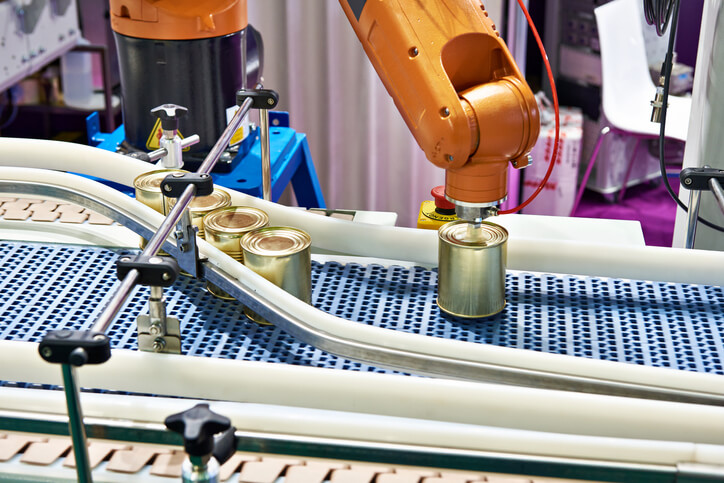The Circulatory System of Any Production Environment
Automated conveyor systems are critical to the success of countless industries operating worldwide — from automotive and manufacturing to food processing and pharmaceutical. While the specific requirements of industries that utilize automated conveyor systems as well as non-automated versions differ, it’s safe to say that the process of moving various components from one phase of the production process to another is what keeps organizations moving toward their goals.
Not only do automated conveyor systems help organizations maintain certain levels of productivity, but they also provide a number of financial and operational benefits. For example, conveyors are able to replace the human labor needed to move parts and materials from one production process to another. This helps organizations save money on labor costs and also ensures the safety of their facilities, as people aren’t hauling materials between machines or to different levels within the facility.
There are many automated conveyor systems available, so it’s important to understand their respective functionalities and features in order to make an informed decision about which system is best for your production goals and operating environment. Next, we’ll explore a few of the most common automated conveyor systems, what their features and functions are, and how they might be used in a production environment.
Three Types of Automated Conveyor Systems
Orienting Conveyors
Orienting conveyors are a staple in any production facility. This type of automated conveyor system allows a practically limitless number of parts to move from A to B, whether that’s an employee entering parts into an entire production cycle or simply moving parts from one manufacturing stage to another further along in the process. More importantly, this conveyor type positions the items or materials moving through it according to your specifications, whether it needs to exit in a certain position or needs to flow into the next process in a specific way.
Orienting conveyors can move parts ranging from disc- and ring-shaped items to cylindrical- or shaft-style parts, whether they are solid or tubular. Depending on where the conveyor stands in the production process, parts can enter the conveyor via employee-handled tote pans, floor hoppers, or conveyors from an earlier operation. On the feeding end, this conveyor can move parts into grinders, induction hardeners, extrusion presses, thread rollers, and more.
Thru Feed Conveyors
Thru feed conveyors are a highly customizable type of automated conveyor system designed for seamless feeding into a number of applications depending on your production process. Common uses include feeding parts for centerless grinding, thread rolling, belt finishing, heat treating, parts washing, and end-of-line assembly.
A variety of parts can be conveyed with thru feed conveyors, such as camshafts, steel bushings, bearing cups, bearing races, and steel bars. Thanks to the customization options, thru feed conveyors can be outfitted with a silent chain or non-marking belt. With a roller chain configuration, thru feed conveyors can handle rougher and more abrasive parts. Ultimately, thru feed conveyors provide direct infeed and exit capabilities to match your production needs.
Centerless Grinding Conveyors
Centerless grinding conveyors are designed to offer a variety of infeed and exit options for conveying parts into centerless grinders. A number of different part types can be fed through the conveyor, such as motor rotors, steel tubes, transmission shafts, bearing races, various pin types, and more. Material can be loaded via ramps, hopper feeders, dumpers, and more.
A few different centerless grinding conveyors are available depending on your production environment and needs. Beyond standard conveyors, exit conveyors allow parts out of the grinder for end feed applications, such as another step in the manufacturing process. Dual round belt conveyors are useful for orienting cylindrical parts as they are fed into and out of machinery. They can be configured to feed a variety of parts.
Get the Right Automated Conveyor System for Your Needs
Unlike other automated conveyor manufacturers, Feedall Automation custom designs and engineers conveyor systems that are designed to operate 24 hours per day, seven days per week — ensuring you meet your production goals. Every automation system we custom build for our clients comes with a best-in-class warranty, support services, and parts replacement to ensure you can continue to benefit from your investment for years to come.
If your organization has been looking to enhance your conveyor and feeding capabilities within your production chain, the Feedall team is here to help. Get in touch with our team today to learn more about our automated conveyor systems and how we can help you.
